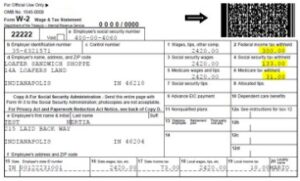
The statement divides the cash flows into operating cash flows, investment cash flows, and financing cash flows. The final result is the net change in cash flows for a particular time period and gives the owner a very comprehensive picture of the cash position of the firm. The first step in financial statement preparation is identifying and gathering relevant financial data from a company’s accounting records.
AccountingTools
Now, you can’t go off creating your different financial statements all willy nilly. Balances of current liabilities like accounts payable and long-term liabilities like bonds appear variable cost per unit here. Other comprehensive income refers to gains and losses that don’t appear on the income statement because the company hasn’t realized them yet. Once you have the closing balance for the retained earnings account, add it to the opening balance of owners’ equity.

This requires a careful reconciliation of at least the major balance sheet accounts, to ensure that they only contain valid balances. In many cases, some or all of these balances need to be charged to expense. As you can see all four general-purpose financial statements are prepared and presented here. Paul can use these statements internally to gauge the performance of his store for the year or he can issue them to lenders or investors to help raise funds to recovery rebate credit expand the store.
Calculate depreciation expense and amortization expense for all fixed assets in the accounting records. Ensure that you are not still taking depreciation expense on assets that have already been fully depreciated (which is especially common when you are tracking depreciation on an electronic spreadsheet). Create your balance sheet and include any current and long-term assets, current and noncurrent liabilities, and the difference between your assets and liabilities (aka equity). Liabilities are debts you owe to other individuals, such as businesses, organizations, or agencies.
Step 4: Prepare adjusting entries at the end of the period
Your business’s financial statements give you a snapshot of the financial health of your company. Without them, you wouldn’t be able to monitor your revenue, project your future finances, or keep your business on track for success. After all, preparing financial statements requires a working knowledge of accounting concepts like double-entry accounting, accrual basis accounting, and the accounting cycle. This statement shows the distribution of profits that are retained by the company and which are distributed as dividends. The four main types of audit opinions are unqualified, qualified, adverse, and disclaimer of opinion. An unqualified opinion indicates that the financial statements are fairly presented and comply with the relevant accounting standards.
At the end of the accounting period, you’ll prepare an unadjusted trial balance. Once you’ve converted all of your business transactions into debits and credits, it’s time to move them into your company’s ledger. Print a preliminary version of the financial statements and review them for errors. There will likely be several errors, so create journal entries to correct them, and print the financial statements again.
Step 5: Prepare an adjusted trial balance
Once the statements have been prepared, Paul can add the personal accountant financial statements to the accounting worksheet and close his books for the year by recording closing entries in the next accounting cycle step. The statement of retained earnings is the second financial statement you must prepare in the accounting cycle. Net profit or loss must be calculated before the statement of retained earnings can be prepared.
Management is interested in the cash inflows to the company and the cash outflows from the company because these determine the company’s cash it has available to pay its bills when due. We will examine the statement of cash flows in more detail later but for now understand it is a required financial statement and is prepared last. The statement of cash flows uses information from all previous financial statements. A cash flow statement shows how cash is entering and leaving your business. While the income statement shows revenue and expenses that don’t cost literal money (like depreciation), the cash flow statement covers all transactions where funds enter or leave your accounts.
- Once you’ve made the necessary correcting entries, it’s time to make adjusting entries.
- Master the fundamentals of construction accounting with this guide.
- Your income statement gives you insight into your company’s income and expenses.
- Paul can use these statements internally to gauge the performance of his store for the year or he can issue them to lenders or investors to help raise funds to expand the store.
- The statement of retained earnings is the second financial statement you must prepare in the accounting cycle.
Your total assets must equal your total liabilities and equity on your balance sheet. The income statement, also known as a profit and loss statement, is important because it shows the overall profitability of your company for the time period in question. Information on sales revenue and expenses from both your accounting journals and the general ledger are used to prepare the income statement. It shows revenue from primary income sources, such as sales of the company’s products, and secondary sources, like if the company sublets a portion of its business premises. No financial statement would be possible without the balance sheet. The balance sheet is the financial statement that tracks the firm’s financial position at a given point in time, typically the last day of the accounting cycle.

